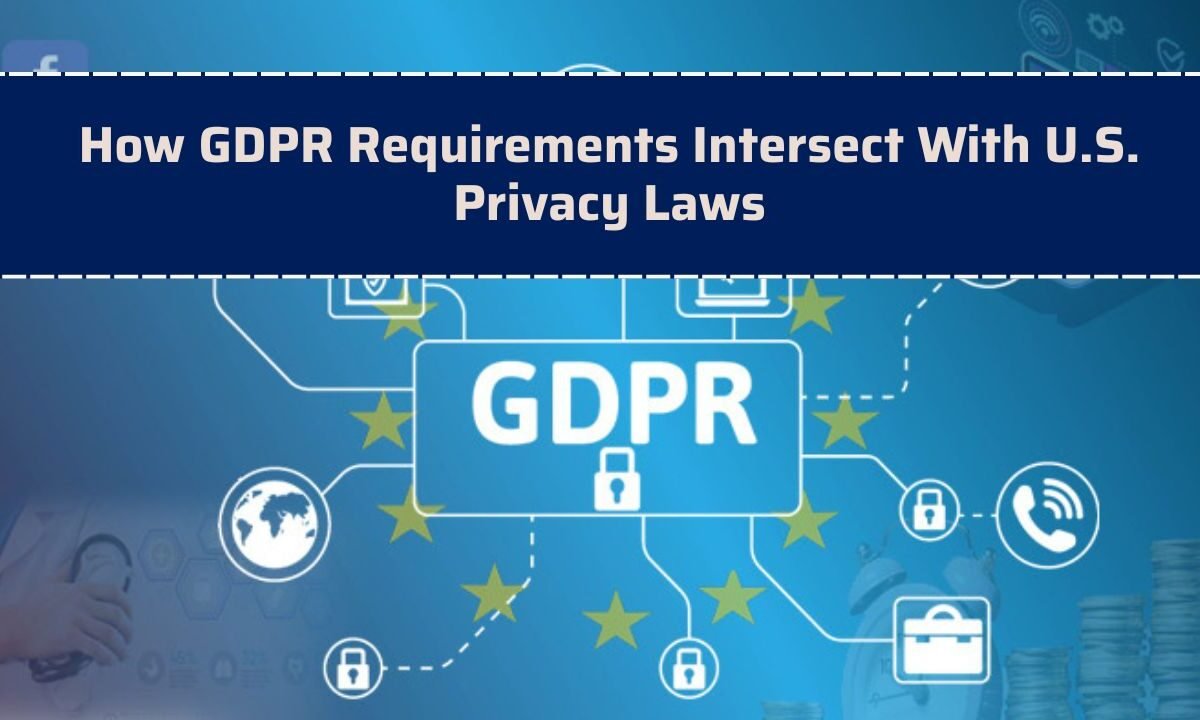Understanding how GDPR requirements intersect with U.S. privacy laws is essential for any organization handling data across the Atlantic.
Navigating this complex landscape involves reconciling extraterritorial mandates, a patchwork of U.S. rules, evolving data transfer frameworks, and mismatched consent and enforcement paradigms.
This guide takes you through the reality of compliance, offering clarity for global and domestic privacy obligations.
Overview: GDPR & the Fragmented U.S. Legal Landscape
GDPR stands as a comprehensive, pan-European privacy framework that applies to organizations both within and outside the EU when processing data of EU/EEA individuals. It mandates robust transparency, consent, legal purpose, data minimization, rights of data subjects, and stringent enforcement with heavy fines
In contrast, U.S. privacy regulation lacks a unified national law. Instead, there’s a fragmented system:
- Sector-specific federal laws like HIPAA, GLBA, and COPPA.
- State privacy acts such as CCPA, CPRA, VCDPA, and CPA, each with distinct rights and obligations.
Key Differences & Alignments
Here’s how GDPR compares with key dimensions of U.S. privacy law:
| Aspect | GDPR (EU / GDPR Standards) | U.S. Laws (State/Federal) |
|---|---|---|
| Scope | Broadly applies to all “personal data” including IP, location, cookies | Narrower in many sectors; often excludes public records. |
| Data Definitions | Includes pseudonymous data as personal unless truly anonymized. | De-identification may remove liability even if reversible |
| Legal Basis / Consent | Requires explicit consent or other lawful bases per Article 6. | Most U.S. laws operate on opt-out models; consent only for sensitive data. |
| Consumer Rights | Strong rights: access, rectify, erase, port data. | Similar rights in strong states like CA; varies widely elsewhere. |
| Enforcement & Penalties | Enforced by Data Protection Authorities; fines up to 4% of global revenue or €20M. | Primarily state AGs or FTC; penalties are generally lower and fractured |
| Data Transfer Mechanisms | Article 45 adequacy decisions required for transfers. | New EU–US Data Privacy Framework allows transfer under adequacy. |
GDPR’s Extraterritorial Reach & U.S. Business Impact
GDPR extends beyond Europe, applying if you:
- Offer services or goods to EU residents,
- Monitor behavior of EU individuals—even online.
In practice, many U.S. businesses must comply with GDPR, especially those with EU users. This compels adopting GDPR norms as a baseline, even domestically.
Data Transfers: Shield to Framework
Transferring data from EU to U.S. requires a GDPR-compliant mechanism:
- Privacy Shield (2016–2020) was invalidated.
- EU–US Data Privacy Framework (2023) enters adequacy, providing temporary legal certainty for transfers.
- However, legal challenges continue, and skepticism remains about surveillance and protections.
Emerging Tensions: Regulatory Clashes and Free Speech
Recent U.S. regulatory guidance signals friction:
- The FTC warns tech firms not to override U.S. rights while complying with EU regulations like GDPR or DSA—highlighting tension between EU privacy norms and U.S. First Amendment protections.
GDPR’s Ripple Effect on U.S. Policy
GDPR has inspired U.S. privacy movements:
- California’s CCPA/CPRA mirror GDPR rights like access, deletion, and opt-out.
- Calls for federal standards, e.g., American Privacy Rights Act, echo GDPR principles.
- There’s a push for uniformity, but federal legislation remains stalled.
Compliance Challenges for Businesses
Organizations harmonize GDPR and U.S. rules by:
- Adopting GDPR-grade privacy controls as a global default.
- Customizing policies to match CCPA/CPRA/other state laws for U.S. operations.
- Implementing DPAs, transparency, and data subject rights workflows to satisfy both regimes.
- Monitoring transfers under Data Privacy Framework, while preparing contingency strategies
The Human Rights Perspective
For marginalized groups, GDPR offers better digital protection:
- After events like the overturning of Roe v. Wade, U.S. apps collecting period or geolocation data lack robust protection, creating risks.
- EU apps compliant with GDPR offer safer alternatives.
Federal vs State Conflicts in the U.S.
- The U.S. currently lacks a comprehensive federal privacy law, creating tension between state-level protections (like California’s CCPA/CPRA, Colorado’s CPA, Virginia’s VCDPA) and businesses operating nationally.
- This patchwork approach contrasts sharply with GDPR’s unified EU-wide framework. Companies must customize compliance policies per state, increasing costs.
Enforcement Dynamics
- GDPR fines have exceeded €2.7 billion since 2018, with Big Tech frequently targeted.
- U.S. enforcement, led by the FTC and state attorneys general, is more limited in scope and penalty scale.
- However, U.S. regulators increasingly pursue cases against deceptive data practices, signaling closer alignment with GDPR principles.
Rights Beyond Basics
- GDPR includes right to be forgotten and data portability, which U.S. laws only partially reflect.
- California’s CPRA moves closer, but many states omit portability rights or provide narrow erasure scopes.
- Businesses serving EU and U.S. customers must reconcile these rights discrepancies in workflows.
Cross-Border Data Transfers
- GDPR allows EU-to-U.S. transfers only with adequacy decisions or standard contractual clauses (SCCs).
- The 2023 EU–US Data Privacy Framework restored adequacy, but legal challenges remain. Businesses should prepare fallback plans, like binding corporate rules.
- This area remains one of the biggest compliance uncertainties.
Emerging Sector-Specific U.S. Privacy Rules
- U.S. laws like HIPAA (health), GLBA (financial), and COPPA (children) overlap with GDPR but differ in scope.
- Increasingly, AI and biometric privacy bills (e.g., Illinois BIPA) add complexity—GDPR already covers biometric data as sensitive data.
The intersection of GDPR requirements and U.S. privacy laws presents both complex compliance demands and opportunities for alignment. While GDPR offers a gold standard, U.S. rules are fragmented.
For organizations operating across borders, the best strategy is to apply GDPR safeguards globally, tailor to state-specific laws, and remain agile as frameworks like the EU–US Data Privacy Framework evolve.
Alignment not only ensures legal compliance but also builds trust with users in both jurisdictions.
FAQs
Yes—if they offer goods/services to or monitor behavior of individuals in the EU/EEA, GDPR’s scope applies, regardless of company location.
The EU–US Data Privacy Framework (2023) now serves as the adequacy mechanism for data transfers, though legal debates persist.
Yes—many do so by default, then layer state-specific adjustments to cover obligations under CCPA/CPRA, minimizing fragmentation and risk.

